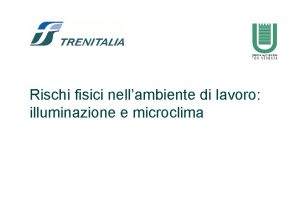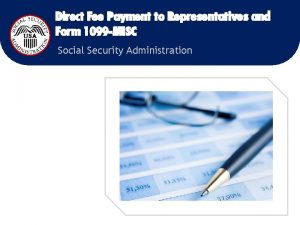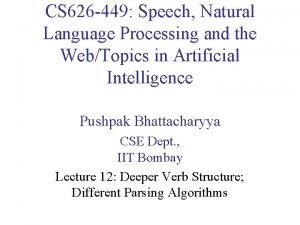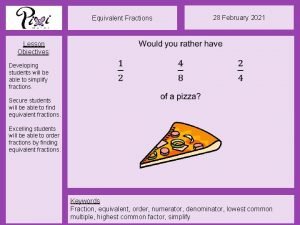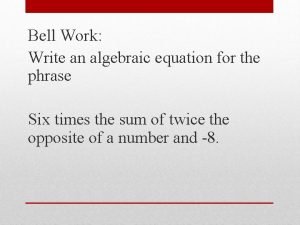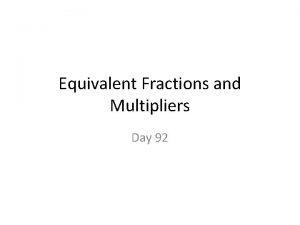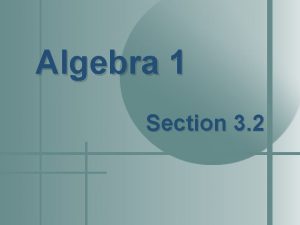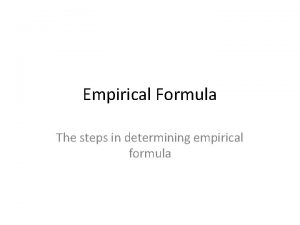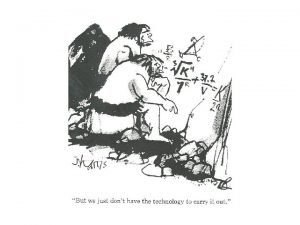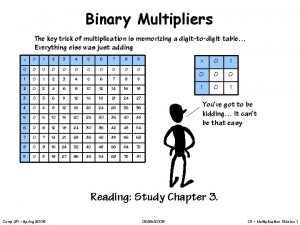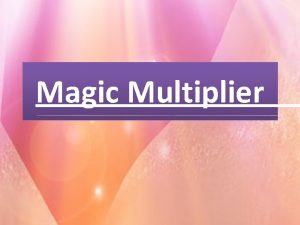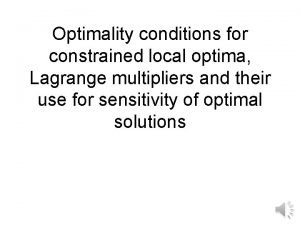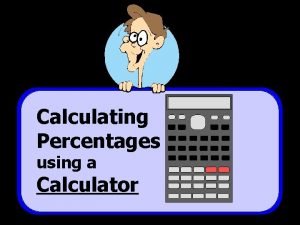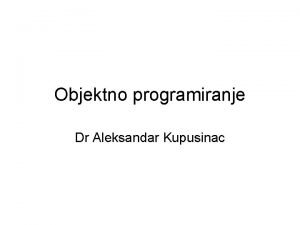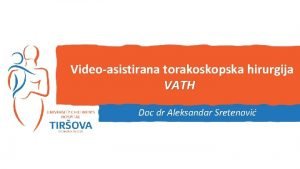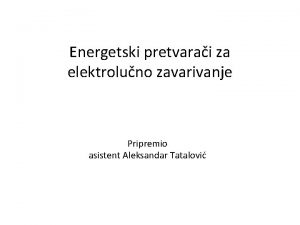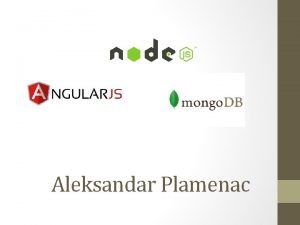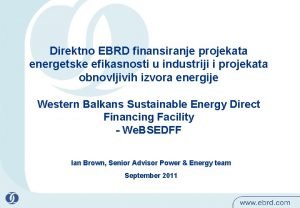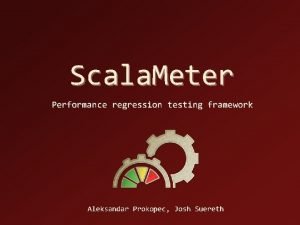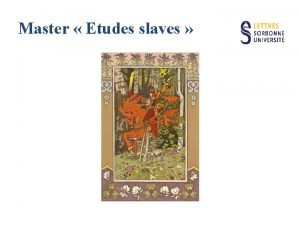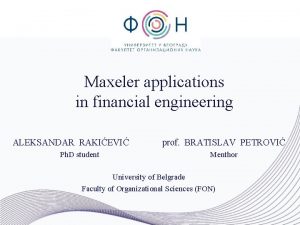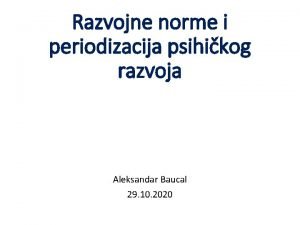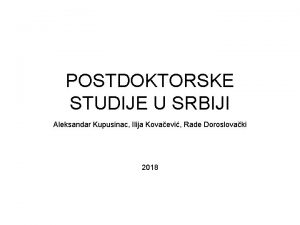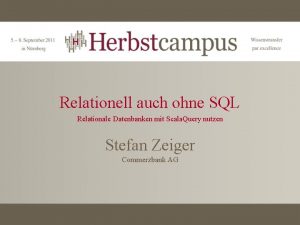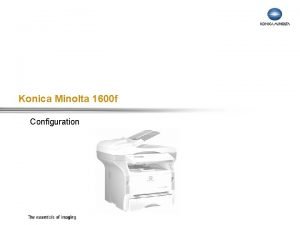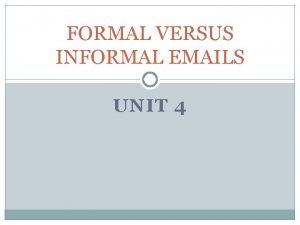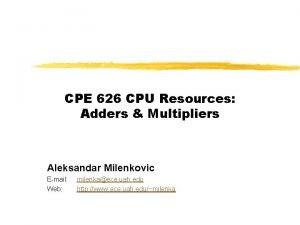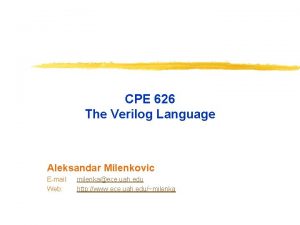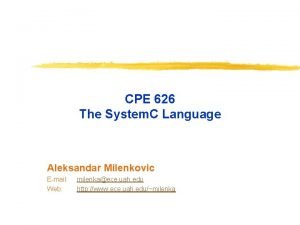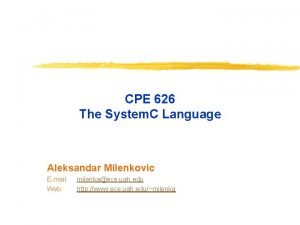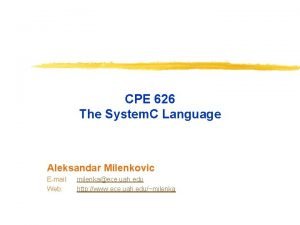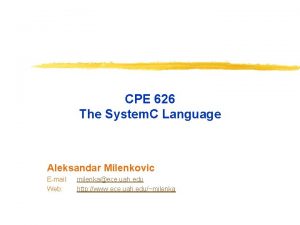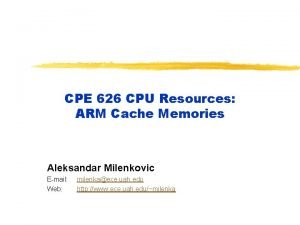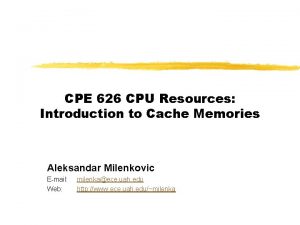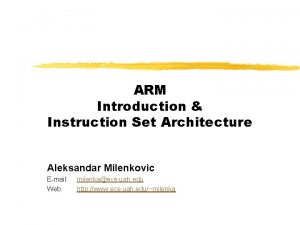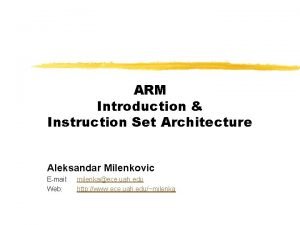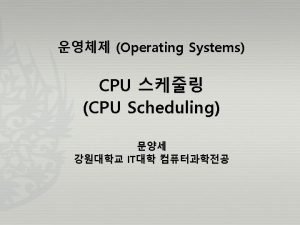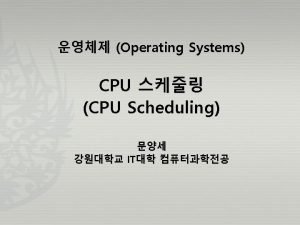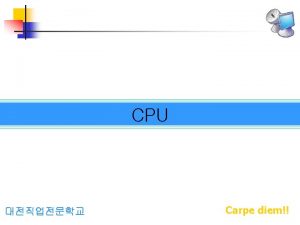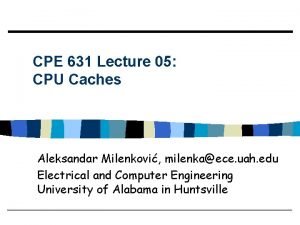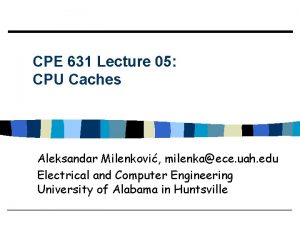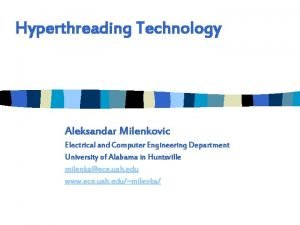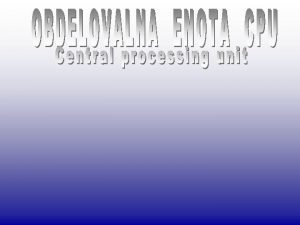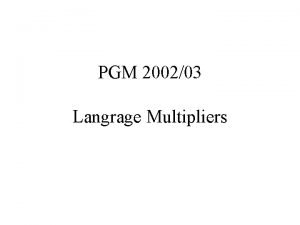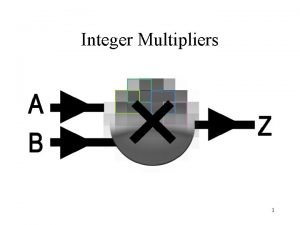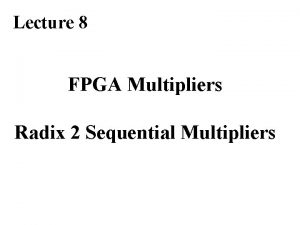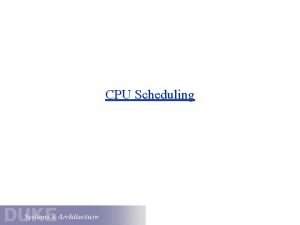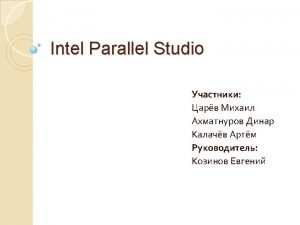CPE 626 CPU Resources Multipliers Aleksandar Milenkovic Email





































- Slides: 37

CPE 626 CPU Resources: Multipliers Aleksandar Milenkovic E-mail: Web: milenka@ece. uah. edu http: //www. ece. uah. edu/~milenka

Outline Ø Ø Ø Ø Unsigned Multiplication Shift and And Multiplier/Divider Speeding Up Multiplication Array Multiplier Signed Multiplication Booth Encoding Wallace-tree 2

Unsigned Multiplication 011101 x 101011 ------------011101 000000 011101 --------------10011011111 multiplicand (29) multiplier (43) partial product • product = 0 • for i = 0 to n-1 – compute partial product (AND operation) – left-shift partial product by i – product += partial product 3

Shift and Add Multiplier Ø for § § § i = 0 to n-1 pp = B a[0] P[2 n-1: n] += pp P = P >> 1 B multiplicand pp adder product P A multiplier 4

Shift and Add Multiplier/Divider Ø (a) Multiplier (b) Divider Ø Operands: n-bit unsigned integers Ø Multiply steps (n steps) § if (A(0) == 1) P <= P + B else P <= P + 0 § P and A are shifted right with carry out of the sum being moved into the MSB of P, the LSB of P moved into MSB of A, and LSB of A being shifted out 5

Division Ø Operands (a/b): n-bit unsigned integers § put a in register A § put b in register B § put 0 in register P Ø Divide steps (n steps) § Shift (P, A) register pair one bit left § P <= P – B § if result is negative, set the low order bit of A to 0, otherwise to 1 § if the result of step 2 is negative, restore the old value of P by adding the contents of B back to P 6

Speeding Up Multiplication (cont’d) Ø Reduce the amount of computation in each step by using carry-save adders (CSA) Ø CSA is simply collection of n independent full adders Ø Each addition operation results in a pair of bits, stored in the sum and carry parts of P Ø At each step, only the LSB bit of the sum needs to be shifted Ø Steps § load the sum and carry bits of P with zero § perform first addition § shift the LSB sum bit of P into A, as well as A itself Note: (n-1) bit of P do not need to be shifted because on the next cycle the sum bits are fed into the next lower order adder Ø Disadvantages § Additional hardware (keep both carry and sum) § After the last step, the high order word of the result must be fed into an ordinary adder to combine the sum and carry parts 7

Speeding Up Multiplication P Carry Shift Sum A B 8

An Example Ø 9 x 5 => 1001 x 0101 = 0010 1101 § C = 0000 S = 0000 A = 0101 P = 1001 § C = 0000 S = 1001 A = 1010 P = 0000 § C = 0000 S = 0100 A = 0101 P = 1001 § C = 0000 S = 1011 A = 1010 P = 0000 § Carry Propagate C = 0000 S = 0101 A = 1101 S = 0010 A = 1101 9

Speeding Up Multiplication (cont’d) Ø Another approach is to examine k low order bits of A at each step, rather than just one bit => higher-radix multiplication Ø Radix-4 Booth recoding Ø Radix-8 Booth recoding Ø. . . 10

Array Multiplier Ø If the space for many adders is available, then multiplication speed can be improved Ø E. g. 5 -bit multiplier (3 CSA + CPA) Ø Advantage § could be pipelined Ø If space budget is limited, use multiple-pass arrangements 11

6 -bit Array Multiplier A 5 B 0 B 1 Ø Adders a 0 -f 0 may be eliminated => this eliminates adders a 1 -a 6 Ø Complexity: CSA - 5 x 6 adders (including 5 half adders) CPA – 6 adders (2 HAs) Ø Delay: proportional to n + delay of CPA (f 6 – b 6) Ø How to improve performance? § decrease the number of partial products § improve the speed of the addition of 12 the partial products

Floorplan of the 4 -bit Array Multiplier 13

Multipass Array Multiplier 14

Even/odd Array Ø First two adders work in parallel Ø Their results are fed into third and fourth adders, which also work in parallel 15

Using CSD Vector Ø 15 (multiplicand) x 19 (multiplier) = ? Ø A x B, B = 00010111 § B = 16 + 4 + 2 + 1 = 23 § Computation: 4 add operations Ø It is easier to multiply A with the canonical signed-digit vector (CSD vector) D § Computation: 3 add/sub operations (a subtraction is as easy as an addition) Ø Weight – number of partial products by 1: B has 4, D has 3 16

CSD Vector Ø Recode (or encode) any binary number, B, as a CSD vector D 17

CSD Vector Ø N – (n + 1)-digit 2’s complement number Ø Recode it using a Radix other than 2 18

CSD Vector: An Example – Radix = 2 Ø B = 101001, n = 5 Ø To multiply by B § encode it as a radix-2 signed digit E § Multiply by 2 (a shift) + 6 (n+1) add/subtract operations 19

Encoded Partial Products bi bi-1 operation 00 do nothing 01 add A 10 subtract A 11 do nothing bi-1 multiplier bi ai subtract zero ppi, j (partial product row i, bit j) 20

Signed Multiplication (1) c 2 pp 0, 2 pp 1, 2 pp 2, 2 n What are c 0, c 1, and c 2? p 5 c 1 pp 0, 2 pp 1, 2 pp 2, 2 CPA p 4 c 0 pp 0, 1 pp 1, 1 pp 2, 1 pp 0, 0 pp 1, 0 p 1 pp 2, 0 p 2 p 3 21

Signed Multiplication (2) c 2 pp 0, 2 pp 1, 2 pp 2, 2 n Do not need this? Why? p 5 c 1 pp 0, 2 pp 1, 2 pp 2, 2 CPA p 4 c 0 pp 0, 1 pp 1, 1 pp 2, 1 pp 0, 0 pp 1, 0 p 1 pp 2, 0 p 2 p 3 22

CSD Vector: An Example – Radix=4 Ø B = 101001, n = 5 Ø To multiply by B § encode it as a radix-4 signed digit E § Multiply by 4 (a shift by 2) + 3 add/subtract operation 23

Booth Encoding (1) Ø Encode a number by taking groups of 3 bits where each 3 -bit group overlaps by 1 bit Ø Consider multiplier B with (n + 1) bit § Pad B with 0 to match the first term § if B has an odd number of bits, then extend the sign Bn. Bn-1. . . B 00 24

Booth Encoding (2) Bi Bi-1 Bi-2 Operation 0 0 0 1 1 0 1 0 1 1 2 1 0 0 -2 1 0 1 -1 1 1 0 -1 1 0 25

Booth Multiply: An Example Ø Ø Ø A = 1100, B = 0111, 2’s compl. , n = 3 M = A*B = ? B=0111. 0 => 011, 110 Step 1: 110 => M = -A = 0000 0100 Step 2: 011 => M = M + 4*(2 A) = 0000 0100 + 11100000 = 1110 0100 = -28 (dec) 26

Wallace-Tree 27

Improving Speed ØCollapse the chain of FAs a 0 -f 5 (5 adders delays) to the Wallace tree consisting of 5. 15. 4 (4 adders delays) ØTo form P 5 use § Summands: S 50, S 41, S 32, S 23, S 14, S 05 § 4 carries from P 4 28

What is Game? Ø Dots and holes – the outputs of one stage = inputs of the next Ø At each stage we have three choices (1) sum 3 outputs using Full Adder – box with 3 dots Ø (2) sum 2 outputs using Half Adder – box with 2 dots Ø (3) pass outputs directly to the next stage Ø Choose (1), (2), or (3) at each stage to maximize the performance of the multiplier Ø Tree-based multipliers § Work Forward (Wallace-tree Multiplier) § Work Backward (Dadda Multiplier) 29

6 -bit Wallace Multiplier Ø Complexity CSA – 26 (incl. 6 HAs) CPA – 4 Ø Delay: CSA – 6 adders delay + CPA – 4 30

6 -bit Dadda Multiplier Ø Complexity CSA – 20 (incl. 4 HAs) CPA – 10 Ø Delay: CSA – 3 adders delay + CPA delay Work Backward: each successive stage is 3/2 times larger 31

ARM Multiplier design Ø All ARMs apart form the first prototype have included support for integer multiplication § older ARM cores include low-cost multiplication hardware that supports only the 32 -bit result multiply and multiply-accumulate § recent ARM cores have high-performance multiplication hardware and support 64 -bit result multiply and multiply-accumulate Ø Low cost implementation § Use the datapath iteratively, employing the barrel shifter and ALU to generate 2 -bit product in each clock cycle § use early termination to stop the iterations when there are no more ones in the multiply register 32

The 2 -bit multiplication algorithm, Nth cycle Ø Control settings for the Nth cycle of the multiplication Ø Use existing shifter and ALU + additional hardware § dedicated two-bits-per-cycle shift register for the multiplier and a few gates for the Booth’s algorithm control logic (overhead is a few per cent on the area of ARM core) 33

High speed multiplication Ø Where multiplication performance is very important, more hardware resources must be dedicated § in some embedded systems the ARM core is used to perform real-time digital signal processing (DSP) – DSP programs are typically multiplication intensive Ø Use intermediate results which include partial sums and partial carries § Carry-save adders are used for this Ø These two binary results are added together at the end of multiplication § The main ALU is used for this 34

Carry-propagate (a) and carry-save (b) adder structures Ø Carry propagate adder takes two conventional (irredundant) binary numbers as inputs and produces a binary sum Ø Carry save adder takes one binary and one redundant (partial sum and partial carry) input and produces a sum in redundant binary representation (sum and carry) 35

ARM high-speed multiplier organization Ø CSA has 4 layers of adders each handling 2 multiplier bits => multiply 8 -bits per clock cycle Ø Partial sum and carry are cleared at the beginning or initialized to accumulate a value Ø Multiplier is shifted right 8 -bits per cycle in the ‘Rs’ register Ø Carry sum and carry are rotated right 8 bits per cycle Ø Performance: up to 4 clock cycles (early termination is possible) Ø Complexity: 160 bits in shift registers, 128 bits of carry-save adder logic (up to 10% of simpler cores) 36

ARM high-speed multiplier organization 37
 Tijana milenkovic
Tijana milenkovic Erika milenkovic
Erika milenkovic Ab 626 san bernardino county
Ab 626 san bernardino county Rischi fisici microclima e illuminazione
Rischi fisici microclima e illuminazione Form ssa-1694
Form ssa-1694 Cs 626
Cs 626 Unit 1 lesson 3 equivalent fractions and multipliers
Unit 1 lesson 3 equivalent fractions and multipliers Prefix multipliers
Prefix multipliers Two unit multipliers
Two unit multipliers Fraction chain
Fraction chain Unit multipliers
Unit multipliers A 60 g sample of tetraethyl lead
A 60 g sample of tetraethyl lead Lagranges equations of undetermined multiplier
Lagranges equations of undetermined multiplier Binary multipliers
Binary multipliers Magic multiplier theory wikipedia
Magic multiplier theory wikipedia Lagrange multipliers
Lagrange multipliers Calculatort
Calculatort Kupusinac
Kupusinac Dr aleksandar sretenovic
Dr aleksandar sretenovic Aleksandar tatalovic
Aleksandar tatalovic Aleksandar.krizo
Aleksandar.krizo Aleksandar kartelj matf
Aleksandar kartelj matf Aleksandar plamenac
Aleksandar plamenac Aleksandar nikcevic
Aleksandar nikcevic Scalameter
Scalameter Aleksandar stefanovic sorbonne
Aleksandar stefanovic sorbonne Hefestion i aleksandar
Hefestion i aleksandar Aleksandar rakicevic
Aleksandar rakicevic Aleksandar baucal
Aleksandar baucal Aleksandar kupusinac
Aleksandar kupusinac Primjeri franšize u hrvatskoj
Primjeri franšize u hrvatskoj Aleksandar prokopec
Aleksandar prokopec Aleksandar kuzmanovic flashback
Aleksandar kuzmanovic flashback Abx aleksandar settings
Abx aleksandar settings Structure of informal email
Structure of informal email Renewable resources vs nonrenewable resources
Renewable resources vs nonrenewable resources What is transformation process
What is transformation process Differentiate fixed resources and variable resources
Differentiate fixed resources and variable resources



